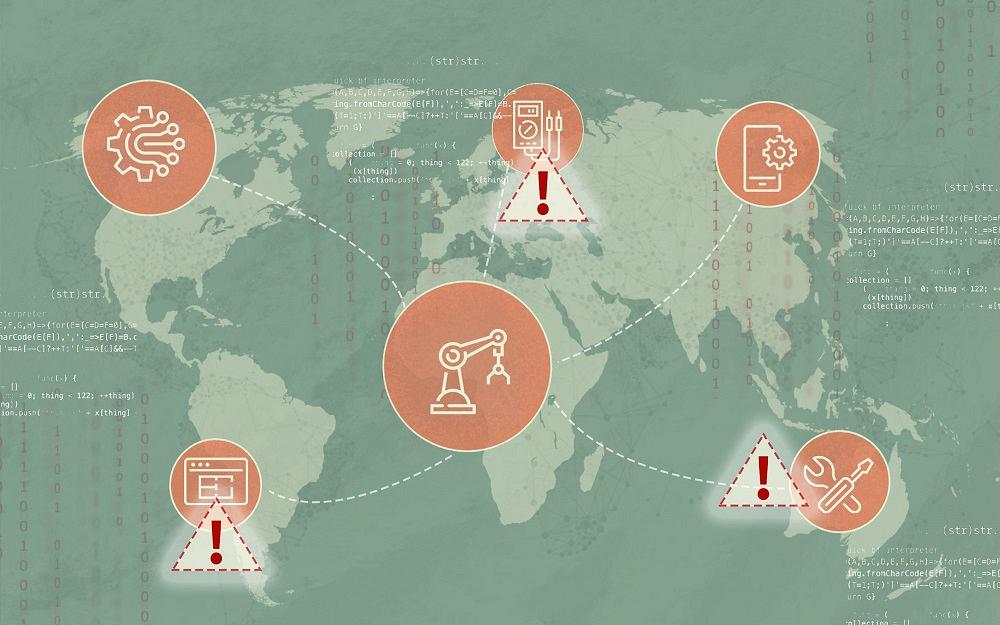- FMA
- The Fabricator
- FABTECH
- Canadian Metalworking
Our Publications
Categories
- Additive Manufacturing
- Aluminum Welding
- Arc Welding
- Assembly and Joining
- Automation and Robotics
- Bending and Forming
- Consumables
- Cutting and Weld Prep
- Electric Vehicles
- En Español
- Finishing
- Hydroforming
- Laser Cutting
- Laser Welding
- Machining
- Manufacturing Software
- Materials Handling
- Metals/Materials
- Oxyfuel Cutting
- Plasma Cutting
- Power Tools
- Punching and Other Holemaking
- Roll Forming
- Safety
- Sawing
- Shearing
- Shop Management
- Testing and Measuring
- Tube and Pipe Fabrication
- Tube and Pipe Production
- Waterjet Cutting
Industry Directory
Webcasts
Podcasts
FAB 40
Advertise
Subscribe
Account Login
Search
NIST releases draft guidebook for addressing supply chain cybersecurity
- February 10, 2020
- News Release
- Shop Management

Technology products are commonly built using components and services supplied by third-party manufacturers and suppliers, making them difficult to secure effectively against malware and other threats. NIST
With a goal to reduce the cybersecurity risk to one of the most vulnerable aspects of commerce—global supply chains—the National Institute of Standards and Technology (NIST) has published a draft guidebook for businesses that presents a set of effective risk management techniques distilled by NIST’s computer security experts.
“Key Practices in Cyber Supply Chain Risk Management” provides a set of strategies to help businesses address the cybersecurity issues posed by modern information and communications technology products, which are commonly built using components and services supplied by third-party organizations. The composed nature of these devices and systems makes them difficult to secure effectively against malware and other threats, placing manufacturers, service providers, and end users at risk.
“The seed of the problem is that everything is interconnected nowadays,” said NIST’s Jon Boyens, one of the draft report’s authors. “Products are very sophisticated, and with our globalized economy, companies often outsource the tasks of developing components and code to other companies, involving multiple tiers of suppliers.”
Vulnerabilities in the cyber supply chain involve not only microchips and their internal code, but also the support software for a device and the other companies that have access to its components. Put them all together, and it can be a daunting task to anticipate every systemic weakness that an adversary might exploit.
The NIST report is a high-level document intended to be easily understood and applied in managing these risks. Its core is a 27-page section outlining eight key practices that have proved to be useful, from establishing a formal risk management program to collaborating closely with key suppliers. Each key practice is accompanied by a set of recommendations, and because each organization will have its own specific needs, the authors also include guidance on how to apply these recommendations.
Acknowledging that companies in different economic sectors might manage supply chain risk differently, the authors also offer a set of 24 case studies in risk management that feature a variety of businesses from aerospace and IT manufacturers to consumer goods companies.
Following public comments, NIST will release a final version in spring 2020.
- Podcasting
- Podcast:
- The Fabricator Podcast
- Published:
- 04/16/2024
- Running Time:
- 63:29
In this episode of The Fabricator Podcast, Caleb Chamberlain, co-founder and CEO of OSH Cut, discusses his company’s...
- Trending Articles
- Industry Events
16th Annual Safety Conference
- April 30 - May 1, 2024
- Elgin,
Pipe and Tube Conference
- May 21 - 22, 2024
- Omaha, NE
World-Class Roll Forming Workshop
- June 5 - 6, 2024
- Louisville, KY
Advanced Laser Application Workshop
- June 25 - 27, 2024
- Novi, MI
























